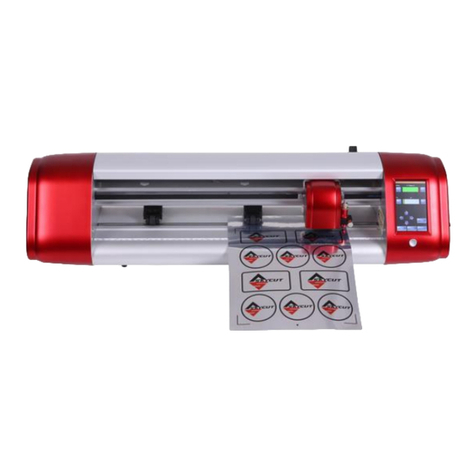Table of Contents
SKYCUT SERIES V WITH COREL DRAW PLUGIN ...........................................1
1. INTRODUCTION AND SETTING UP.............................................................................................................4
1.00QUICK REFERENCE FOR THIS CHAPTER ......................................................................................................4
1.01SUPPORT.................................................................................................................................................4
1.02SAFETY AND WARNINGS............................................................................................................................4
1.03WARRANTY..............................................................................................................................................5
1.04UNPACKING .............................................................................................................................................5
1.05CONTENTS...............................................................................................................................................5
1.06PARTS OF THE SKYCUT .............................................................................................................................6
Front...........................................................................................................................................................6
Right Side...................................................................................................................................................7
Left Side.....................................................................................................................................................7
Back...........................................................................................................................................................7
1.07ACCESSORIES ..........................................................................................................................................8
1.07.1 Assembling the Skycut Stand (optional) ...........................................................................................8
1.07.2 Tables..............................................................................................................................................8
1.07.3 Test Pen..........................................................................................................................................9
1.07.4 Skycut Blades..................................................................................................................................9
1.07.5 Blade Installation............................................................................................................................10
1.08PREPARING AND CARING FOR THE CUTTING MAT .......................................................................................11
1.08.1 Tips on Using the Cutting Mat ........................................................................................................11
1.08.2 Cleaning and Replenishing the Cutting Mat....................................................................................11
1.09PINCH WHEELS ......................................................................................................................................12
1.09.1 Raising and Lowering.....................................................................................................................12
1.09.2 Pinch Wheel Locations...................................................................................................................13
1.10CONTROL PANEL ....................................................................................................................13
1.10.1 Set Screen.....................................................................................................................................14
1.11INSTALLING THE COREL DRAW PLUGIN......................................................................................................15
1.12CUT AND SET FUNCTIONS........................................................................................................................16
1.12.1 Cut Icon.........................................................................................................................................16
1.12.2 Set Icon.........................................................................................................................................17
1.13CONNECTING THE SKYCUT TO YOUR COMPUTER ........................................................................17
1.13.1 USB Connection ...........................................................................................................18
1.13.2 Wi-Fi Connection ...........................................................................................................................18
1.13.3 Wireless Stand-Alone.....................................................................................................................21
1.13.4 USB Flash Drive ...........................................................................................................22
1.14TEST DRAW SHAPES...............................................................................................................................25
1.15ADDITIONAL CONTROL PANEL SETTINGS ...................................................................................................28
1.15.1 Advanced Settings.........................................................................................................................29
1.15.2 General Settings............................................................................................................................32
1.15.3 Sys Information..............................................................................................................................33
1.16MAINTENANCE........................................................................................................................................34
1.17OTHER USEFUL TOOLS AND SUPPLIES......................................................................................................34
2. CUTTING ....................................................................................................................................................36
2.00QUICK REFERENCE FOR THIS CHAPTER ....................................................................................................36
2.01WHAT YOU NEED TO UNDERSTAND ABOUT CUTTING..................................................................................36
2.01.1 You Have To Make Mistakes..........................................................................................................36
2.01.2 Record Your Successes.................................................................................................................36
2.01.3 Installing the Blade Holder, Test Pen, or Accessory Tools..............................................................36




























